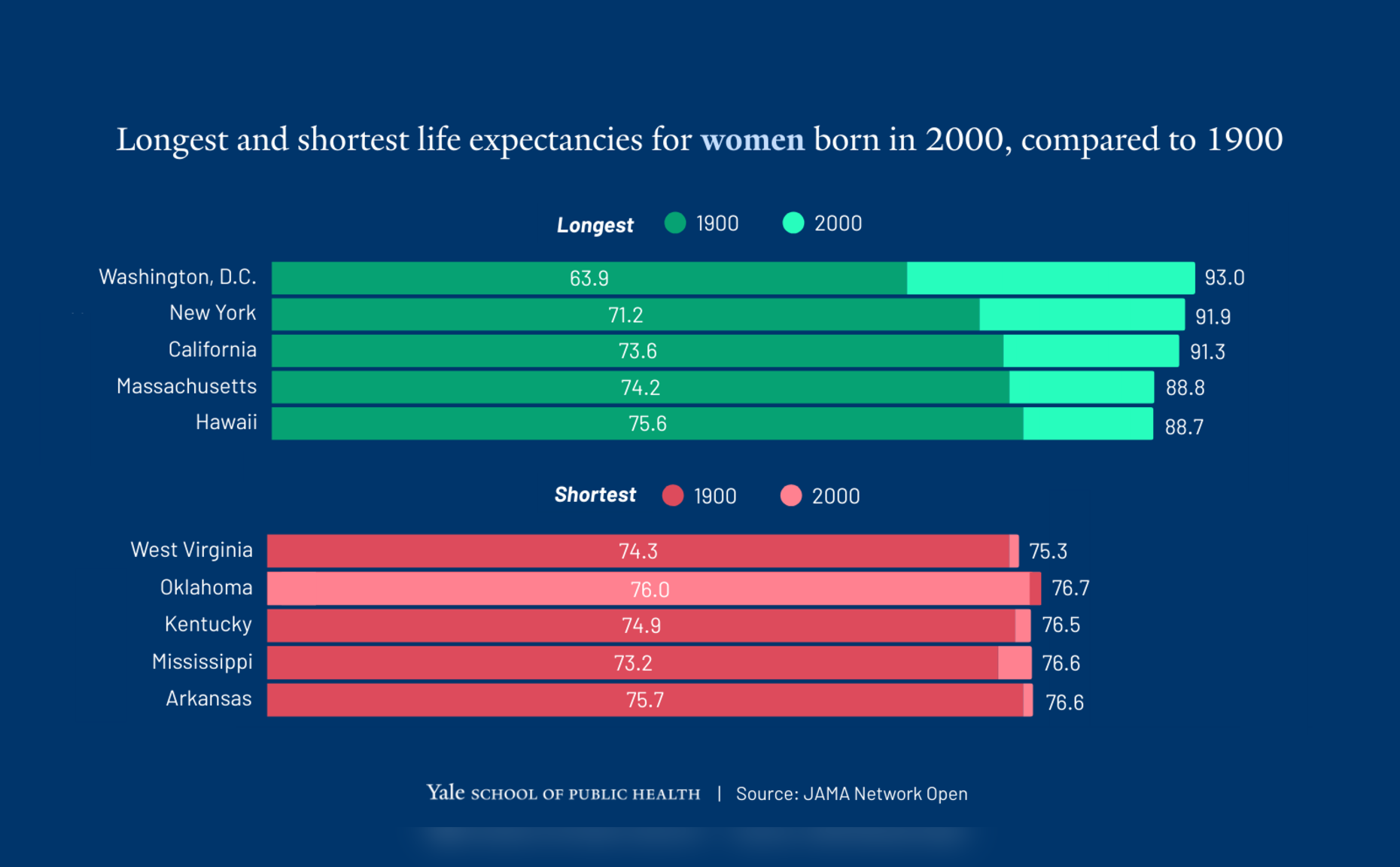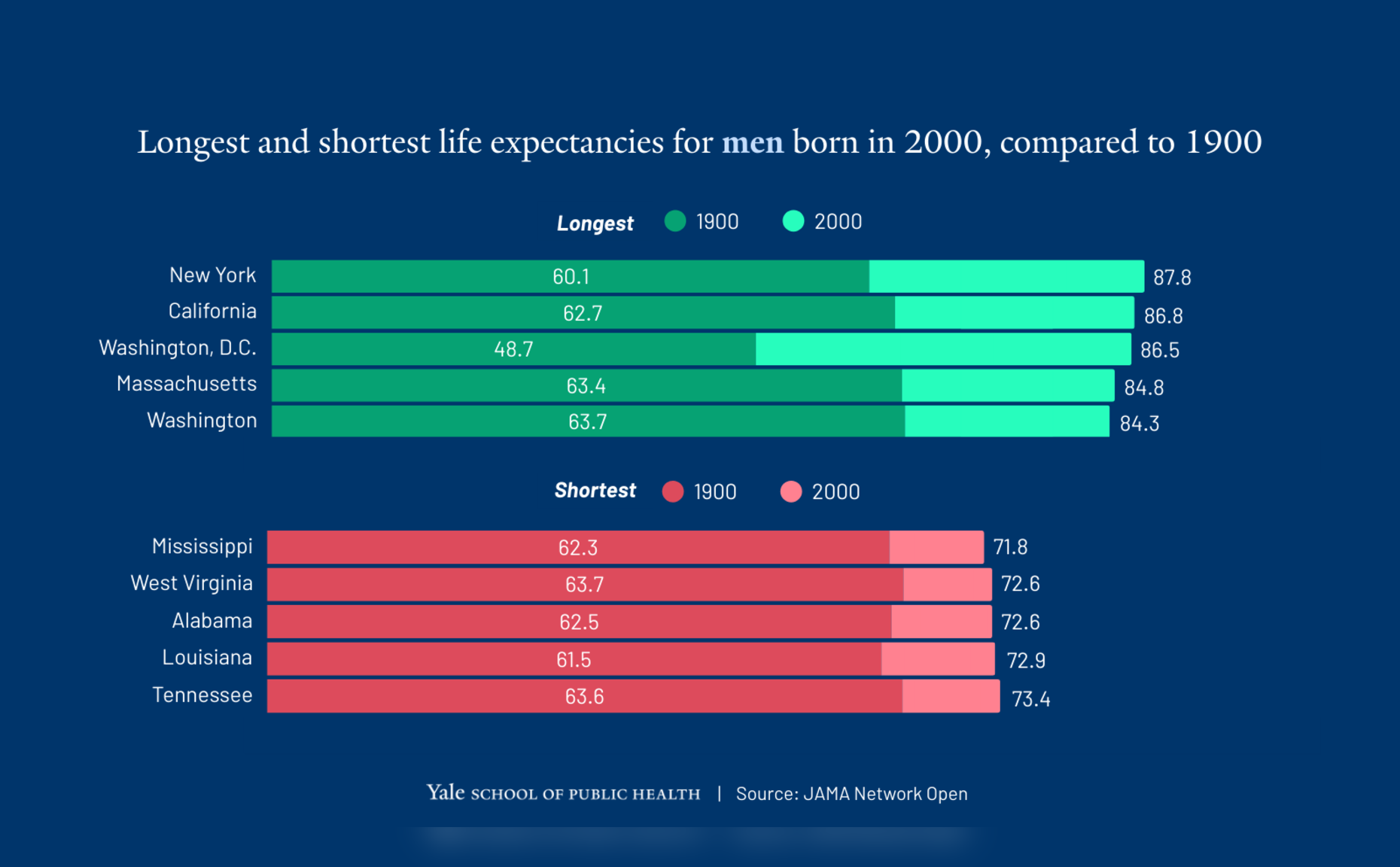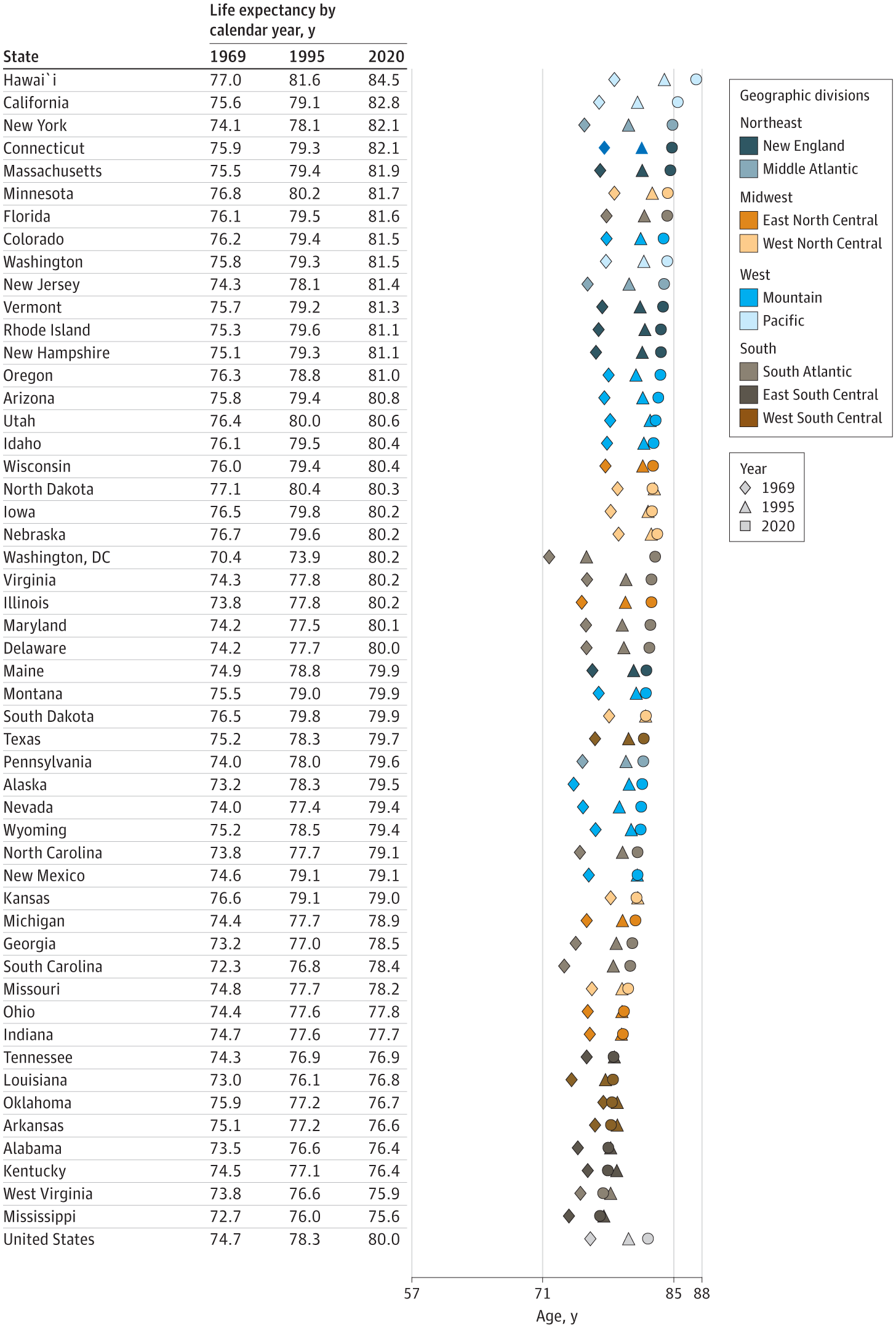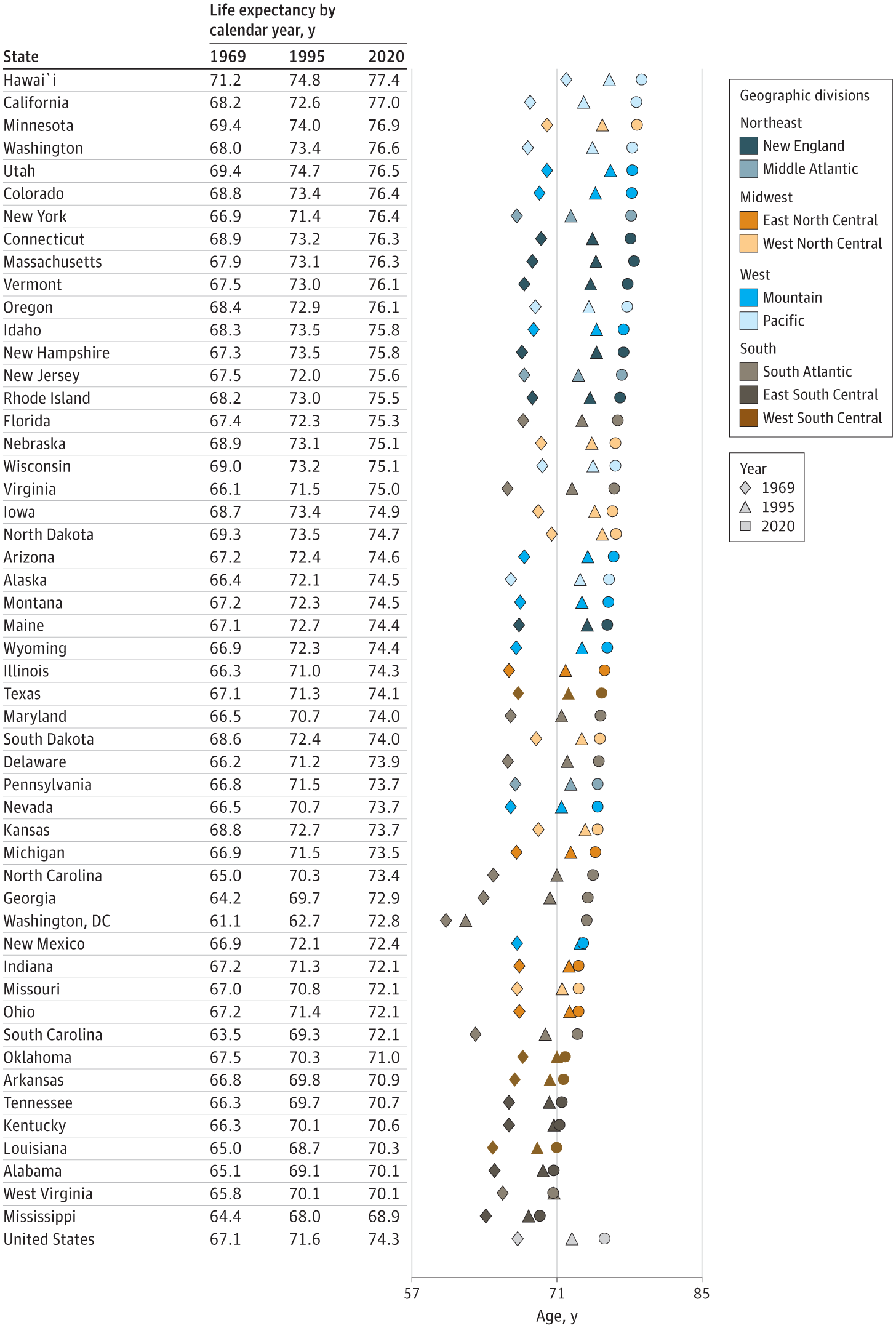Life expectancy in the United States varies dramatically based on where someone lives. A groundbreaking study by researchers at the Yale School of Public Health (YSPH) examined more than 179 million deaths from 1969 to 2020, revealing wide gaps in longevity among states and highlighting how local health policies shape lives.
For decades, Americans enjoyed steady gains in lifespan due to improved sanitation, tobacco control, medical care, and prevention of chronic diseases like heart disease and cancer. But these gains haven’t been equal across the country. Some states have thrived, while others lagged behind.
The study, published in JAMA Network Open, used an innovative approach by tracking groups of people born around the same time—called birth cohorts—instead of looking at each year separately. This method paints a clearer picture of how different generations experience health over their lives.

“Looking at mortality trends by cohort gives us a more accurate reflection of the lived experiences of populations,” said Theodore R. Holford, the study’s lead author and a professor at YSPH. “It shows the long-term impact of policies and social conditions affecting the life course.”
From 1900 to 2000, life expectancy improved significantly in the Northeast and West, especially in New York, California, and Washington, D.C. For instance, women in New York and California saw lifespan gains of over 20 years.
In stark contrast, Southern states like Mississippi, Alabama, and Kentucky saw minimal increases, particularly among women—less than three years over the same century.
“That’s a staggering contrast,” Holford noted. “Where you are born shouldn’t determine how long you live. But in America, it still does.”
Related Stories
The researchers found state policies significantly influenced these disparities. Progressive states often adopted measures early, such as tobacco control laws or broader access to healthcare, helping people live longer, healthier lives.
California, for example, banned smoking in workplaces early in 1995. As a result, entire generations grew up without second-hand smoke exposure, and many adults quit smoking. This policy significantly improved life expectancy over decades.
Meanwhile, Kentucky lagged in tobacco control, leading to higher smoking rates and increased mortality. Similar trends appeared in West Virginia, Oklahoma, Arkansas, Tennessee, Louisiana, Mississippi, and Alabama, states that historically lacked aggressive health measures.

Jamie Tam, another researcher from YSPH, highlighted the direct link between poverty, limited healthcare access, and shorter lifespans. “These trends in mortality and life expectancy reflect not only each state’s policy environment but also their underlying demographics,” Tam said. “It’s not surprising states with fewer improvements to life expectancy also have higher poverty rates.”
The study’s novel cohort approach also revealed how early life experiences shape health outcomes as people age. Early exposure to sanitation, vaccinations, or tobacco control profoundly affects health later in life.
The researchers measured how quickly death rates rise after age 35. Longer intervals between these increases indicate healthier aging. Again, regional differences were striking. New York and Florida showed healthier aging patterns, while Oklahoma and Iowa saw quicker mortality escalation.

“Public health interventions affect people early in life, and the impact follows them as they age,” said Holford. For example, raising the legal smoking age or improving childhood vaccinations has lasting health benefits throughout someone’s lifetime.
Today’s health disparities stem from decades of cumulative impacts—from tobacco use and healthcare access to environmental factors. Without proactive policy changes, these disparities might persist or even worsen.
“The disparities we see today are the result of decades of cumulative effects,” Holford emphasized. “Without conscious policy changes, these gaps will likely persist or even widen.”

The study calls for targeted interventions such as tobacco control, better healthcare access, and environmental protections. Researchers hope these findings will motivate policy shifts to ensure healthier lives for future generations.
“This research highlights the importance of viewing health through a generational lens,” Tam added. “The benefits of health interventions ripple across lifetimes.”
As Holford concluded, your birthplace shouldn’t determine your lifespan. Yet, the reality in the U.S. today shows that it often still does.
Note: The article above provided above by The Brighter Side of News.
Like these kind of feel good stories? Get The Brighter Side of News’ newsletter.
The post Study finds striking differences in life expectancy across U.S. states appeared first on The Brighter Side of News.